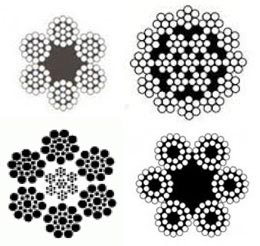 Aircraft cables, also known as aviation cables, have a long and fascinating history that dates back to the early 20th century. These cables are an essential component of modern aviation, providing the necessary support and structural integrity to aircraft of all types and sizes.
Aircraft cables, also known as aviation cables, have a long and fascinating history that dates back to the early 20th century. These cables are an essential component of modern aviation, providing the necessary support and structural integrity to aircraft of all types and sizes.
The term "aircraft cable" was originally used to describe the steel wire ropes that were used to control the movements of the control surfaces on early aircraft. These control cables were essential to the safe operation of the aircraft, and were so named because they were used exclusively in the aviation industry.In the early days of aviation, cables were the preferred method of transmitting control inputs from the cockpit to the control surfaces, such as the rudder, elevators, and ailerons.
The widespread adoption of aircraft cables can be attributed to several factors. First and foremost, the aviation industry itself played a significant role in promoting the use of these cables. As aviation technology advanced, so too did the design and construction of aircraft cables. By the 1930s, aircraft cables had evolved to incorporate more advanced materials, such as stainless steel and synthetic fibers like nylon and Kevlar. These materials provided greater strength and durability, as well as improved resistance to corrosion and other environmental factors.
Another key factor that contributed to the popularity of aircraft cables was the increasing demand for reliable, durable tools and materials in a variety of industries. As technology advanced, so did the need for stronger, more reliable cables that could withstand the demands of modern industry.
Aircraft cables quickly became popular in the marine industry, where they are used in the construction of boats and ships to provide support and structural integrity to the vessel. They also found use in the construction industry, where they are used to provide support and stability to buildings and bridges. In the automotive industry, aircraft cables are used to provide support and stability to various systems, such as the suspension and braking systems. Additionally, aircraft cables are commonly used in industrial applications such as mining, oil and gas exploration, and manufacturing.
Sports and agriculture are two additional industries that benefit from the strength and durability of aircraft cables. In sports, aircraft cables are used for activities such as zip lining and rock climbing. In agriculture, they are used in the operation of irrigation systems and in the construction of livestock fencing.
The future of aircraft cables is promising, as advancements in materials science and manufacturing processes continue to drive innovation in the industry. There is a growing focus on developing even stronger and more lightweight cables, which will offer greater performance and efficiency in aviation and other industries. The use of new materials such as carbon fiber and other composite materials is expected to increase in the coming years, providing even greater strength and durability while reducing the overall weight of the cables. Additionally, the development of new technologies and automated manufacturing processes is expected to drive down production costs, making aircraft cables more accessible to a wider range of industries. As technology continues to evolve, aircraft cables are likely to remain an essential tool in a variety of industries, providing the strength and durability needed to support modern infrastructure and operations.
Related Reading